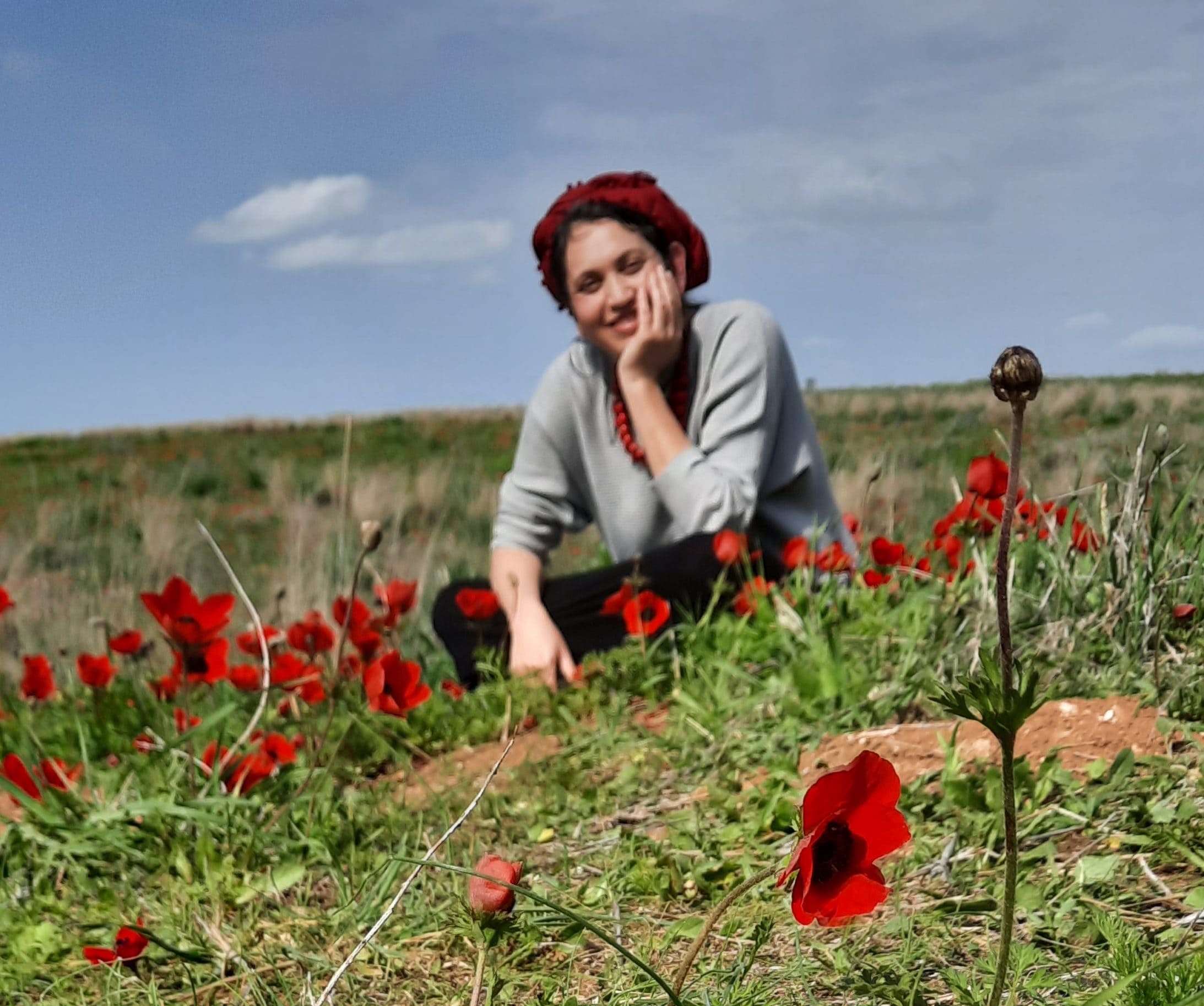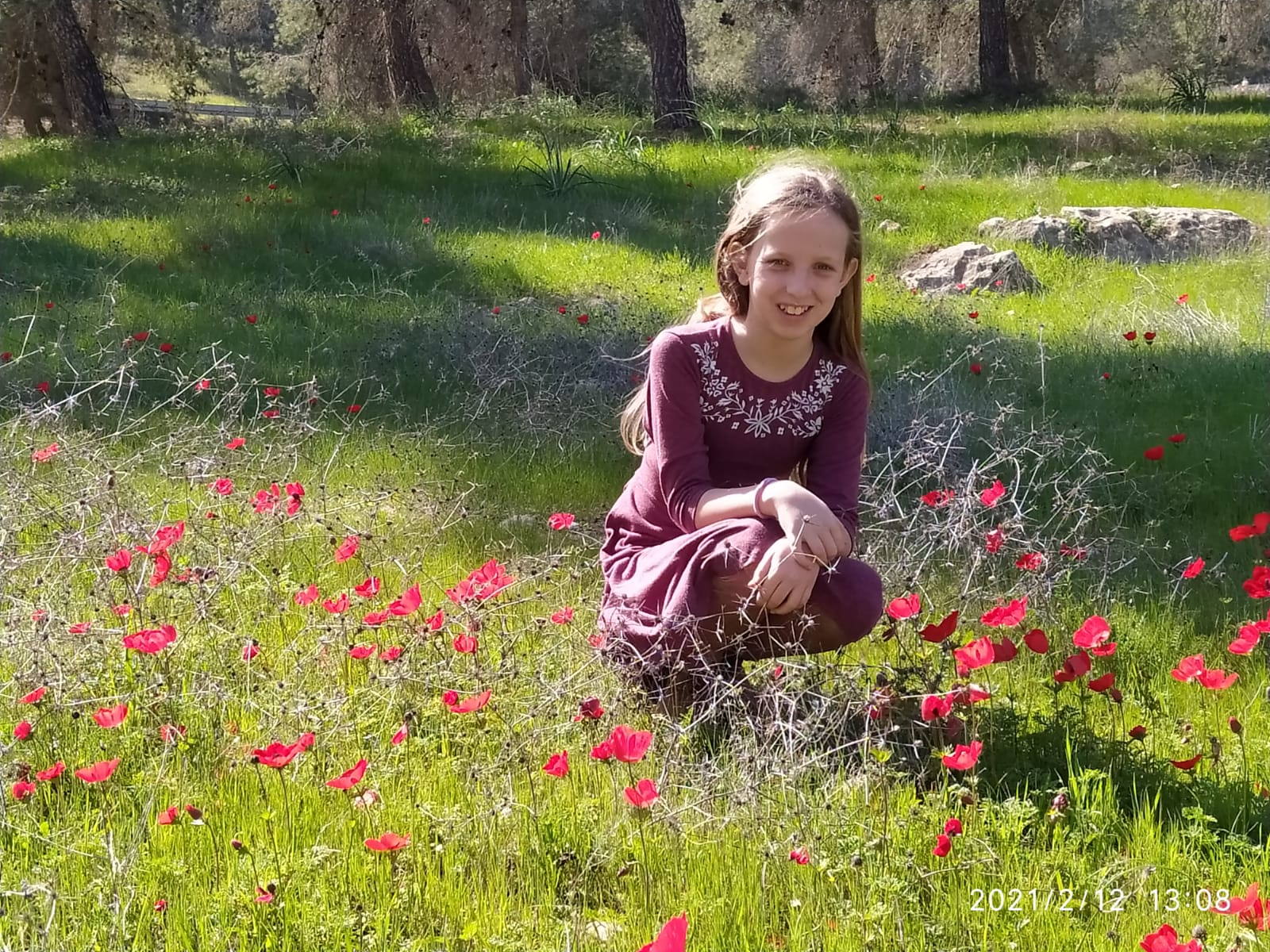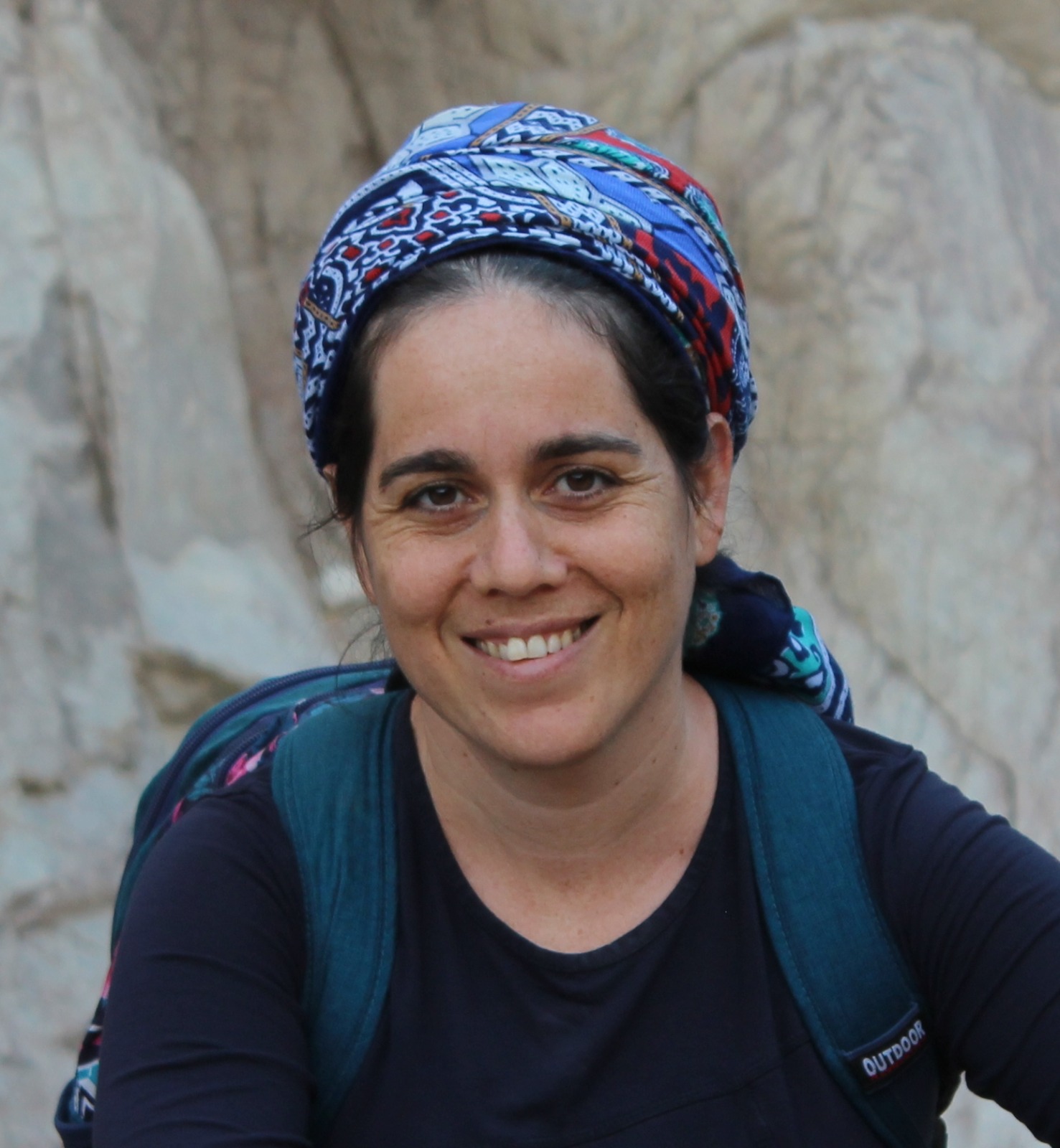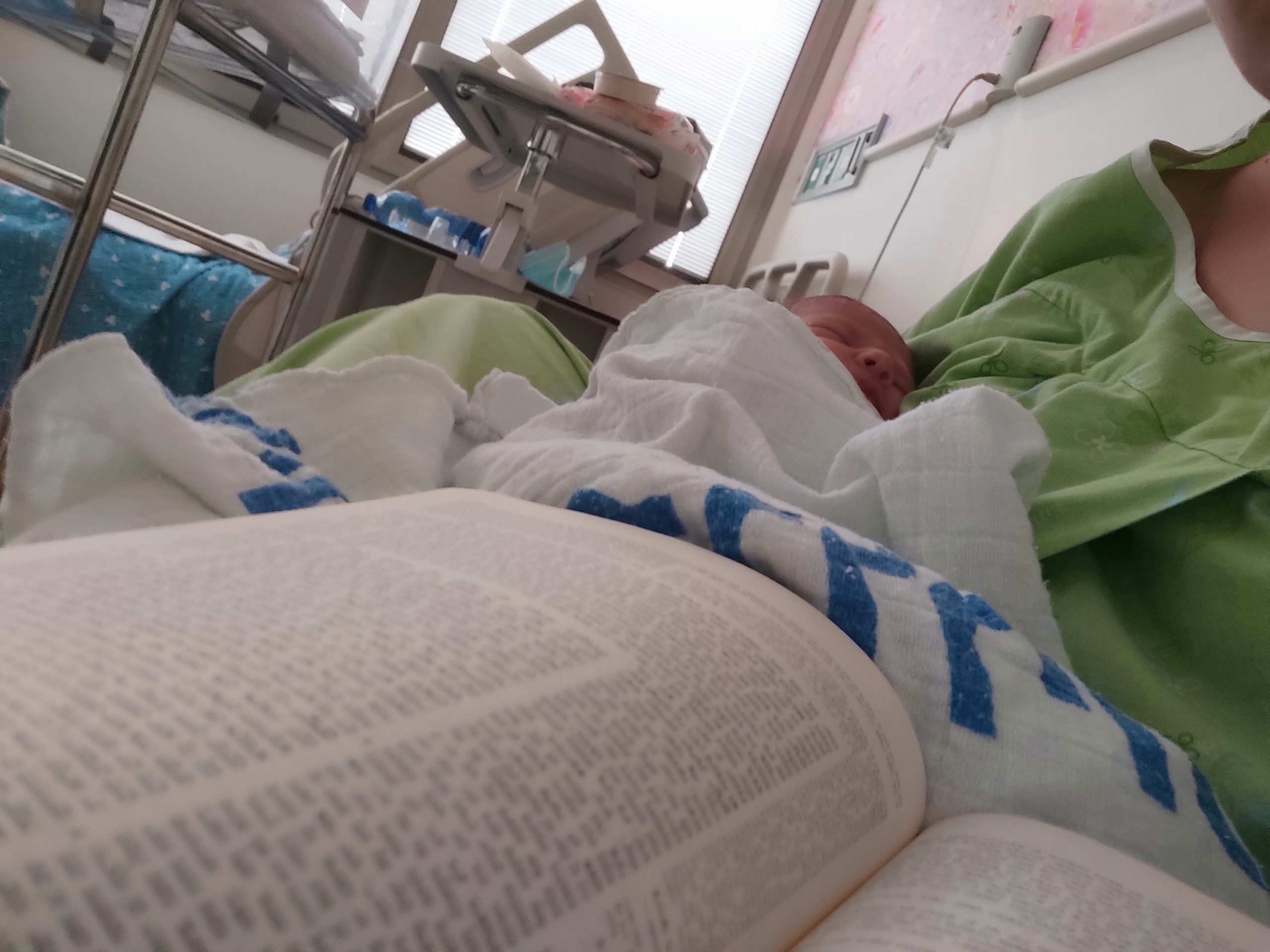בבא קמא יח
בְּהִתִּיז צְרוֹרוֹת, וּבִפְלוּגְתָּא דְּסוֹמְכוֹס וְרַבָּנַן קָמִיפַּלְגִי.
The dispute concerns a case where the chicken propelled pebbles from underfoot as it was hopping, and it is with regard to the issue that is the subject of the dispute of Sumakhos and the Rabbis, cited earlier, that the tanna’im in the baraita disagree. One tanna holds that the owner pays the full cost of the damage for pebbles propelled by an animal in the course of its walking, and the other tanna holds that its owner pays half the cost of the damage.
תָּא שְׁמַע: תַּרְנְגוֹלִין שֶׁהָיוּ מְחַטְּטִין בְּחֶבֶל דְּלִי, וְנִפְסַק הַחֶבֶל וְנִשְׁבַּר הַדְּלִי – מְשַׁלְּמִין נֶזֶק שָׁלֵם. שְׁמַע מִינַּהּ, בָּתַר מֵעִיקָּרָא אָזְלִינַן! תַּרְגְּמַהּ אַחֶבֶל.
The Gemara suggests: Come and hear an additional attempt to resolve the dilemma from a baraita: In a case where chickens were pecking at the rope tied to a bucket and the rope was severed and the bucket fell and broke, the owner of the chickens pays the full cost of the damage. Conclude from the baraita that we follow the initial action that ultimately led to the damage in determining liability for damage. The Gemara rejects this conclusion, and one cannot adduce proof from the baraita. Interpret instead that the reference in the baraita is to the damage caused to the rope, while the owner pays only half the cost of the damage for breaking the bucket.
וְהָא חֶבֶל מְשׁוּנֶּה הוּא! דְּמָאוּס בְּלִישָׁה: וְהָא ״נִשְׁבַּר דְּלִי״ קָתָנֵי! אֶלָּא סוֹמְכוֹס הִיא, דְּאָמַר: צְרוֹרוֹת – נֶזֶק שָׁלֵם מְשַׁלֵּם.
The Gemara asks: But isn’t eating a rope atypical behavior for a chicken, and therefore it should be classified within the primary category of Goring, not the primary category of Eating? Why then must the owner of the chicken pay the full cost of the damage? The Gemara answers: The reference in the baraita is to a case where the rope was filthy [ma’us] with kneaded dough, and in those circumstances it is typical for a chicken to peck at it. The Gemara asks: But doesn’t the tanna teach in the baraita: And the bucket broke, indicating that the dispute is with regard to damage done to the bucket, not to the rope? The Gemara explains: Rather, this baraita is in accordance with the opinion of Sumakhos, who says: In the case of pebbles propelled by an animal, the owner pays the full cost of the damage.
אִי סוֹמְכוֹס, אֵימָא סֵיפָא: נִיתַּז מִמֶּנּוּ שֶׁבֶר, וְנָפַל עַל כְּלִי אַחֵר וּשְׁבָרָהּ – עַל הָרִאשׁוֹן מְשַׁלֵּם נֶזֶק שָׁלֵם, וְעַל הָאַחֲרוֹן מְשַׁלֵּם חֲצִי נֶזֶק. וְאִי סוֹמְכוֹס, מִי אִית לֵיהּ חֲצִי נֶזֶק?
The Gemara asks: If it is in accordance with the opinion of Sumakhos, say the latter clause of the baraita: If a shard was propelled from the bucket broken by a chicken and it fell upon another vessel and broke it, the owner of the chicken pays the full cost of the damage for the first vessel, and half the cost of the damage for the second one. And if the baraita is in accordance with the opinion of Sumakhos, is he of the opinion that one pays half the cost of the damage caused by pebbles?
וְכִי תֵּימָא שָׁאנֵי לֵיהּ לְסוֹמְכוֹס בֵּין נֶזֶק כֹּחוֹ לְכֹחַ כֹּחוֹ; וְאֶלָּא הָא דְּבָעֵי רַב אָשֵׁי: כֹּחַ כֹּחוֹ לְסוֹמְכוֹס, כְּכֹחוֹ דָּמֵי אוֹ לָאו כְּכֹחוֹ דָּמֵי?
And if you would say that there is a difference, according to Sumakhos, between damage resulting from a force generated by the animal’s action, e.g., pebbles, and damage caused by a force generated by a force generated by its action, e.g., damage caused by the shard of the bucket, and in the latter case Sumakhos concedes that the owner pays half the cost of the damage, that would result in a difficulty. The Gemara asks: But what of this dilemma raised by Rav Ashi: According to the opinion of Sumakhos, what is the halakha with regard to damage caused by a force generated by a force generated by the animal’s action? Is the status of that secondary force like that of damage caused by a force generated by its action, in which case the owner is liable, or is its status not like that of damage caused by a force generated by its action?
תִּפְשׁוֹט לֵיהּ דְּלָאו כְּכֹחוֹ דָּמֵי!
Why did Rav Ashi state his dilemma; why did he not resolve the dilemma and conclude that according to Sumakhos its status is not like that of damage caused by a force generated by its action? Since Rav Ashi does not resolve the dilemma based on this baraita, apparently, Sumakhos does not distinguish between the two types of force.
אֶלָּא לָאו רַבָּנַן הִיא? שְׁמַע מִינַּהּ בָּתַר מֵעִיקָּרָא אָזְלִינַן!
The Gemara suggests: Rather, is it not so that this baraita is in accordance with the opinion of the Rabbis, and conclude from the baraita that we follow the initial action that ultimately led to the damage when determining one’s liability for the damage. Therefore, an owner is liable for any damage resulting from his animal’s typical behavior, and he pays the full cost of the damage done to the bucket even if the damage took place in another location.
אָמַר רַב בִּיבִי בַּר אַבָּיֵי: דְּקָאָזֵיל מִינֵּיהּ מִינֵּיהּ.
Rav Beivai bar Abaye said: There is no proof from the baraita, as it could be explained that the reference in the baraita is to a case where the bucket is continually propelled from the impetus of the chicken, who caused the bucket to break. That is why the ruling in the baraita is that the owner of the chicken pays the full cost of the damage. The dilemma with regard to the case where an animal treads upon a vessel that rolls away and breaks elsewhere remains unresolved.
בָּעֵי רָבָא: חֲצִי נֶזֶק צְרוֹרוֹת – מִגּוּפוֹ מְשַׁלֵּם, אוֹ מֵעֲלִיָּיה מְשַׁלֵּם? מִגּוּפוֹ מְשַׁלֵּם – דְּלָא אַשְׁכְּחַן חֲצִי נֶזֶק דִּמְשַׁלֵּם מֵעֲלִיָּיה, אוֹ דִלְמָא מֵעֲלִיָּיה מְשַׁלֵּם – דְּלָא אַשְׁכְּחַן כְּאוֹרְחֵיהּ דִּמְשַׁלֵּם מִגּוּפֵיהּ?
§ Rava raises a dilemma: With regard to one’s liability to pay half the cost of the damage caused by pebbles inadvertently propelled by the foot of a walking animal, does the owner of the animal pay restitution exclusively from the body of the animal, just as one pays half the cost of the damage caused by an innocuous ox with regard to damage categorized under the primary category of Goring? Or does he pay restitution from his superior–quality land, as he does for other forms of damage? The Gemara elaborates: Does he pay restitution exclusively from the body of the animal, as we do not find any case where one pays half the cost of the damage from his superior–quality land? Or perhaps he pays restitution from his superior–quality land, as we do not find any case where an animal causes damage in its typical manner where the owner pays restitution exclusively from the body of his animal?
תָּא שְׁמַע: הִידּוּס – אֵינוֹ מוּעָד. וְיֵשׁ אוֹמְרִים: הֲרֵי זֶה מוּעָד. הִידּוּס סָלְקָא דַּעְתָּךְ?! אֶלָּא לָאו הִידּוּס וְהִתִּיז,
The Gemara suggests: Come and hear a resolution to this dilemma from a baraita: With regard to hopping, a chicken is not deemed forewarned. And some say that it is forewarned. The Gemara questions the formulation of the baraita: Does it enter your mind to raise the possibility that a chicken is not forewarned with regard to hopping? Hopping is the typical manner of movement for chickens. Rather, is it not that the reference in the baraita is to a case where the chicken was hopping and propelled pebbles that caused the damage?
וּבְהָא קָמִיפַּלְגִי: מַאן דְּאָמַר אֵינוֹ מוּעָד – קָסָבַר מִגּוּפוֹ מְשַׁלֵּם, וּמַאן דְּאָמַר מוּעָד – קָסָבַר מֵעֲלִיָּיה מְשַׁלֵּם?
And it is with regard to this matter that they disagree: The one who says that the chicken is not deemed forewarned holds that its owner pays restitution from the body of the animal, as is the halakha when an innocuous animal gores, while the one who says that the chicken is forewarned holds that he pays restitution from his superior–quality land, as is the halakha when a forewarned animal causes damage. According to this analysis, Rava’s dilemma is the subject of a tannaitic dispute.
לָא; בִּפְלוּגְתָּא דְּסוֹמְכוֹס וְרַבָּנַן קָמִיפַּלְגִי.
The Gemara rejects this: No, perhaps the dispute in the baraita is with regard to the issue that is the subject of the dispute of Sumakhos and the Rabbis with regard to the legal status of damage caused by a force generated by the animal’s action. It is with regard to the similarity of damage caused by an action performed by an animal’s body to the case where the chicken was hopping and propelled pebbles that caused the damage that the tanna’im in the baraita disagree.
תָּא שְׁמַע: הַכֶּלֶב שֶׁנָּטַל חֲרָרָה וְהָלַךְ לְגָדִישׁ, וְאָכַל הַחֲרָרָה וְהִדְלִיק אֶת הַגָּדִישׁ – עַל הַחֲרָרָה מְשַׁלֵּם נֶזֶק שָׁלֵם, וְעַל הַגָּדִישׁ מְשַׁלֵּם חֲצִי נֶזֶק.
The Gemara suggests: Come and hear a resolution of this dilemma from a mishna (21b): If the dog took a loaf [ḥarara] that was baking on hot coals and went to a stack of grain to eat the loaf, and the dog ate the loaf and ignited the stack of grain with one of the coals attached to the loaf, the owner of the dog pays the full cost of the damage for the damage to the loaf, as it is classified in the primary category of Eating, and he pays half the cost of the damage for the damage to the stack of grain. Rabbi Elazar says: He pays the full cost of the damage for the damage to the stack of grain as well.
מַאי טַעְמָא – לָאו מִשּׁוּם דְּהָוְיָא לְהוּ צְרוֹרוֹת? וְתָנֵי עֲלַהּ: מְשַׁלֵּם חֲצִי נֶזֶק – מִגּוּפוֹ!
What is the reason that the first tanna holds that the owner pays half the cost of the damage caused to the stack of grain? Is it not due to the fact that it is analogous to propelling pebbles, as the coal fell from the loaf held in its mouth and ignited the grain? And it is taught in a baraita in that regard that when the first tanna said that he pays half the cost of the damage, he pays restitution exclusively from proceeds of the sale of the body of his animal. Apparently, half the cost of the damage caused by pebbles is paid from the body of the animal that caused the damage.
וְתִסְבְּרָא?! לְרַבִּי אֶלְעָזָר – נֶזֶק שָׁלֵם מִגּוּפֵיהּ מִי אַשְׁכְּחַן?
The Gemara rejects this explanation: And can you understand the baraita in that way? According to that understanding, with regard to Rabbi Elazar, who disagrees with the first tanna and holds that the owner of the dog pays the full cost of the damage caused to the grain, do we find anywhere that according to Rabbi Elazar one pays restitution exclusively from proceeds of the sale of the body of his animal?
אֶלָּא כְּגוֹן דְּשַׁנִּי בְּהָא גַּחֶלֶת, וְרַבִּי אֶלְעָזָר סָבַר לַהּ כְּרַבִּי טַרְפוֹן, דְּאָמַר: מְשׁוּנֶּה קֶרֶן בַּחֲצַר הַנִּיזָּק, נֶזֶק שָׁלֵם מְשַׁלֵּם.
Rather, the baraita can be explained in a case where the dog acted atypically with this coal with which he lit the stack of grain. Since the dog’s behavior was atypical, the damage is classified under the primary category of Goring, not under the category of Eating. And Rabbi Elazar holds in accordance with the opinion of Rabbi Tarfon, who says in a mishna (24b): The halakha of Goring in the courtyard of the injured party is atypical, as there, the owner of the ox pays the full cost of the damage, in contrast to half the cost of the damage that he pays when it transpires in the public domain. Nevertheless, since it was an innocuous animal that caused the damage, restitution is paid from its body.
וְלָא הִיא; מַאי טַעְמָא מוֹקְמַתְּ לַהּ כְּרַבִּי טַרְפוֹן – מִשּׁוּם נֶזֶק שָׁלֵם?
The Gemara rejects that explanation: But that is not so. What is the reason that you interpreted that the baraita is in accordance with the opinion of Rabbi Tarfon? It is due to the difficulty presented by the halakha that he pays the full cost of the damage exclusively from proceeds of the sale of the body of the animal, which would not be so according to Rabbi Elazar.
רַבִּי אֶלְעָזָר סָבַר כְּסוֹמְכוֹס, דְּאָמַר: צְרוֹרוֹת – נֶזֶק שָׁלֵם מְשַׁלֵּם; וְסָבַר לַהּ כְּרַבִּי יְהוּדָה, דְּאָמַר: צַד תַּמּוּת בִּמְקוֹמָהּ עוֹמֶדֶת. וְכִי קָתָנֵי מִגּוּפוֹ – אַצַּד תַּמּוּת.
The Gemara suggests: There is an alternative explanation. Rabbi Elazar holds in accordance with the opinion of Sumakhos, who says that one pays the full cost of the damage caused by pebbles, and he also holds in accordance with the opinion of Rabbi Yehuda, who says with regard to a forewarned ox: The aspect of innocuousness, which dictates that the owner pays half the cost of the damage from the body of the ox, remains intact. According to Rabbi Yehuda, the owner of a forewarned ox pays half the cost of the damage from the body of his ox and half the cost of the damage from his superior–quality land. And when the tanna of the baraita teaches that the owner pays restitution from the body of his animal, the reference is to the aspect of innocuousness, i.e., half the cost of the damage. He pays the other half from his superior–quality land as he would in the case of any forewarned animal.
אֲמַר לֵיהּ רַב סַמָּא בְּרֵיהּ דְּרַב אָשֵׁי לְרָבִינָא: אֵימוֹר דְּשָׁמְעַתְּ לֵיהּ לְרַבִּי יְהוּדָה, בְּתָם וְנַעֲשָׂה מוּעָד; בְּמוּעָד מִתְּחִילָּתוֹ
Rav Samma, son of Rav Ashi, said to Ravina: Say that you heard that Rabbi Yehuda stated that the aspect of innocuousness remains intact with regard to damage categorized under the primary category of Goring, where the ox was initially innocuous and then became forewarned. In the case of propelled pebbles, which is a subcategory of Trampling, where the ox is forewarned from the outset,
מִי שָׁמְעַתְּ לֵיהּ?
did you hear him distinguish between the different parts of the payment? There is no aspect of innocuousness in the case of pebbles.
אֶלָּא כִּי קָאָמַר רַבִּי אֶלְעָזָר נֶזֶק שָׁלֵם – כְּגוֹן דְּאִיַּיעַד; וּבְהָא קָמִיפַּלְגִי – מָר סָבַר יֵשׁ הַעֲדָאָה לִצְרוֹרוֹת, וּמַר סָבַר אֵין הַעֲדָאָה לִצְרוֹרוֹת.
Rather, when Rabbi Elazar says that the owner of the dog pays the full cost of the damage in a case that is similar to one of propelled pebbles, he was referring to a case where the owner of the animal was forewarned with regard to this matter. And they disagree about this point: One Sage, Rabbi Elazar, holds that there is forewarning with regard to propelling pebbles; therefore, if there was testimony given in court that a particular animal regularly propels pebbles in the course of its walking, the animal is deemed forewarned and its owner pays the full cost of the damage. And one Sage, the first tanna, holds that there is no forewarning with regard to pebbles. Apparently, payment for damage caused by pebbles is paid from the body of the animal.
אֶלָּא הָא דְּבָעֵי רָבָא: יֵשׁ הַעֲדָאָה לִצְרוֹרוֹת, אוֹ אֵין הַעֲדָאָה לִצְרוֹרוֹת? אִי לְרַבָּנַן – אֵין הַעֲדָאָה לִצְרוֹרוֹת, אִי לְרַבִּי אֶלְעָזָר – יֵשׁ הַעֲדָאָה לִצְרוֹרוֹת!
The Gemara asks: But if this is the case, then the dilemma raised by Rava concerning whether there is forewarning for propelling pebbles or there is no forewarning for propelling pebbles, can be resolved from this dispute. If the dilemma is raised according to the Rabbis, i.e., the first tanna, there is no forewarning for propelling pebbles. If the dilemma is raised according to Rabbi Elazar, there is forewarning for propelling pebbles.
אָמַר לָךְ רָבָא: כִּי מִיבַּעְיָא לִי לְדִידִי, אַלִּיבָּא דְּרַבָּנַן דִּפְלִיגִי עֲלֵיהּ דְּסוֹמְכוֹס; אֲבָל הָכָא, בֵּין לְרַבָּנַן בֵּין לְרַבִּי אֶלְעָזָר – כְּסוֹמְכוֹס סְבִירָא לְהוּ, דְּאָמַר: צְרוֹרוֹת – נֶזֶק שָׁלֵם מְשַׁלֵּם.
The Gemara answers that Rava could have said to you: When I raise the dilemma, I do so specifically according to the opinion of the Rabbis who disagree with Sumakhos and hold that one pays half the cost of the damage in the case of pebbles; but here in this baraita, both the Rabbis, i.e., the first tanna, and Rabbi Elazar hold in accordance with the opinion of Sumakhos, who says that in the case of pebbles, one pays the full cost of the damage.
וְטַעְמָא מַאי אֲמוּר רַבָּנַן חֲצִי נֶזֶק – דְּשַׁנִּי וְלָא אִיַּיעַד; וּבִפְלוּגְתָּא דְּרַבִּי טַרְפוֹן וְרַבָּנַן קָמִיפַּלְגִי.
And what is the reason that the Rabbis say that one pays half the cost of the damage in the case of pebbles? It is that in the case of pebbles the animal acted atypically and was not forewarned. And in this baraita, concerning the dog that lit the stack of grain, the dispute between the first tanna and Rabbi Elazar is with regard to the issue that is the subject of the dispute between Rabbi Tarfon and the Rabbis, i.e., the halakha in the case of damage caused by an innocuous ox on the property of the injured party.
אֵימוֹר דְּשָׁמְעַתְּ לֵיהּ לְרַבִּי טַרְפוֹן – נֶזֶק שָׁלֵם; מִגּוּפוֹ מִי שָׁמְעַתְּ לֵיהּ?
The Gemara rejects the parallel between the opinion of Rabbi Elazar and the opinion of Rabbi Tarfon. Say that you heard that according to Rabbi Tarfon the owner pays the full cost of the damage; but did you hear that according to Rabbi Tarfon restitution is paid only from the body of the animal that caused the damage?
אִין; מֵהֵיכָא מַיְיתֵי לַהּ – מִקֶּרֶן מֵרְשׁוּת הָרַבִּים;
The Gemara answers: Yes, Rabbi Tarfon holds that restitution is paid only from the body of the animal that caused the damage. From where does Rabbi Tarfon derive the halakha that when damage is caused by an innocuous ox on the property of the injured party its owner is liable to pay the full cost of the damage and not merely half? He derives it via an a fortiori inference from damage categorized as Goring that is caused in the public domain, as explained in the mishna (24b).
דַּיּוֹ לַבָּא מִן הַדִּין לִהְיוֹת כַּנִּדּוֹן.
His ruling is based on the principle: It is sufficient for the conclusion that emerges from an a fortiori inference to be like its source, i.e., a halakha derived from an a fortiori inference cannot be more stringent than the source of that derivation. Since restitution for damage categorized as Goring that is caused in the public domain is paid only from the body of the damaging animal, the same is true with regard to restitution for damage categorized as Goring that is caused on the property of the injured party.
וְהָא רַבִּי טַרְפוֹן לֵית לֵיהּ ״דַּיּוֹ״!
The Gemara asks: But isn’t it clear from that mishna that Rabbi Tarfon does not accept the principle: It is sufficient for the conclusion that emerges from an a fortiori inference to be like its source, as, if he accepted that principle, not only would he hold that payment is only from the body of the animal, he would also require payment of half the cost of the damage.
כִּי לֵית לֵיהּ ״דַּיּוֹ״ – הֵיכָא דְּמִפְּרִיךְ קַל וָחוֹמֶר; הֵיכָא דְּלָא מִפְּרִיךְ קַל וָחוֹמֶר – אִית לֵיהּ ״דַּיּוֹ״.
The Gemara answers: He does not reject the principle. When he does not accept the principle: It is sufficient for the conclusion that emerges from an a fortiori inference to be like its source, it is in a case where the result of rejecting the principle is that the a fortiori inference is refuted. But in a case where the result of rejecting the principle is that the a fortiori inference is not refuted, but will be applied in a more limited fashion, he accepts the principle: It is sufficient for the conclusion that emerges from an a fortiori inference to be like its source. Therefore, in this case the payment of the full cost of the damage, which is derived by means of the a fortiori inference, is paid only from the body of the animal based on the principle: It is sufficient for the conclusion that emerges from an a fortiori inference to be like its source.
גּוּפָא – בָּעֵי רָבָא: יֵשׁ הַעֲדָאָה לִצְרוֹרוֹת, אוֹ אֵין הַעֲדָאָה לִצְרוֹרוֹת? לְקֶרֶן מְדַמֵּינַן לֵיהּ, אוֹ דִלְמָא תּוֹלָדָה דְרֶגֶל הוּא?
§ The Gemara discusses the matter itself, cited earlier. Rava raises a dilemma: Is there forewarning for propelling pebbles, so that the owner would pay the full cost of the damage if he had been forewarned three times, or is there no forewarning for propelling pebbles, and he will always pay half the cost of the damage? The Gemara elaborates: Do we liken the case of propelled pebbles to damage categorized as Goring? Accordingly, when an innocuous ox causes damage by propelling pebbles its owner pays half the cost of the damage, and when a forewarned ox does so the owner pays the full cost of the damage. Or perhaps, is it a subcategory of the primary category of Trampling, which is deemed forewarned from the outset? Accordingly, the owner would always pay half the cost of the damage, as there is no change in status after the third warning.
תָּא שְׁמַע: הִידּוּס – אֵינוֹ מוּעָד. וְיֵשׁ אוֹמְרִים: הֲרֵי זֶה מוּעָד. הִידּוּס סָלְקָא דַּעְתָּךְ?! אֶלָּא הִידּוּס וְהִתִּיז.
The Gemara suggests: Come and hear the resolution of this dilemma from a baraita: With regard to hopping, a chicken is not deemed forewarned. And some say that it is forewarned. The Gemara questions the formulation of the baraita: Does it enter your mind to raise the possibility that a chicken is not forewarned with regard to hopping? Hopping is the typical manner of movement for chickens. Rather, is it not that the reference in the baraita is to a case where the chicken was hopping and propelled pebbles that caused damage?
מַאי, לָאו כְּגוֹן דַּעֲבַד תְּלָתָא זִימְנֵי – וּבְהָא קָמִיפַּלְגִי: מָר סָבַר יֵשׁ הַעֲדָאָה, וּמַר סָבַר אֵין הַעֲדָאָה? לָא, בְּחַד זִימְנָא; וּבִפְלוּגְתָּא דְּסוֹמְכוֹס וְרַבָּנַן קָמִיפַּלְגִי.
What, is it not referring to a case where the chicken has done so three times? And it is with regard to this that they disagree: One Sage holds: There is forewarning for pebbles, and one Sage holds: There is no forewarning for pebbles. According to this analysis, Rava’s dilemma is the subject of a tannaitic dispute. The Gemara rejects this resolution: No, perhaps the reference in the baraita is to a case where the chicken hopped only one time. And the tanna’im disagree with regard to the issue that is the subject of the dispute between Sumakhos and the Rabbis, concerning the compensation for damage caused by pebbles.
תָּא שְׁמַע: בְּהֵמָה שֶׁהֵטִילָה גְּלָלִים לְעִיסָּה, רַב יְהוּדָה אוֹמֵר: מְשַׁלֵּם נֶזֶק שָׁלֵם, וְרַבִּי אֶלְעָזָר אוֹמֵר: חֲצִי נֶזֶק. מַאי, לָאו כְּגוֹן דַּעֲבַד תְּלָתָא זִימְנֵי – וּבְהָא קָמִיפַּלְגִי: מָר סָבַר יֵשׁ הַעֲדָאָה, וּמַר סָבַר אֵין הַעֲדָאָה?
The Gemara suggests: Come and hear the resolution to the dilemma from an amoraic dispute: If an animal dropped excrement onto dough and damaged it, Rav Yehuda says: The owner of the animal pays the full cost of the damage, and Rabbi Elazar says: He pays half the cost of the damage. What, is it not referring to a case where the animal has done so three times? And it is with regard to this that they disagree, as one Sage holds: There is forewarning for pebbles, and one Sage holds: There is no forewarning for pebbles.
לָא; בְּחַד זִימְנָא, וּבִפְלוּגְתָּא דְּסוֹמְכוֹס וְרַבָּנַן קָמִיפַּלְגִי. וְהָא מְשׁוּנֶּה הוּא! דִּדְחִיק לֵיהּ עָלְמָא.
The Gemara rejects this resolution: No, perhaps the reference in the baraita is to a case where the animal dropped excrement only one time. And the tanna’im disagree with regard to the issue that is the subject of the dispute between Sumakhos and the Rabbis, concerning compensation for damage caused by pebbles. The Gemara asks: But isn’t this atypical behavior of the animal, and since all behavior that deviates from the norm is classified within the category of Goring, the owner should be liable to pay only half the cost of the damage? The Gemara answers: The case is one where the animal was forced into a narrow place and had no alternative to relieving itself onto the dough; therefore, it does not constitute atypical behavior.
וְלֵימָא רַב יְהוּדָה: הֲלָכָה כְּסוֹמְכוֹס, וְלֵימָא רַבִּי אֶלְעָזָר: הֲלָכָה כְּרַבָּנַן! גְּלָלִים אִצְטְרִיכָא לֵיהּ; סָלְקָא דַּעְתָּךְ אָמֵינָא, הוֹאִיל וּבָתַר גּוּפֵיהּ גְּרִירִין – כְּגוּפֵיהּ דָּמֵי; קָא מַשְׁמַע לַן.
The Gemara asks: But if the amoraic dispute parallels the tannaitic dispute, let Rav Yehuda say: The halakha is in accordance with the opinion of Sumakhos, and let Rabbi Elazar say: The halakha is in accordance with the opinion of the Rabbis, instead of stating their dispute in the context of the particular case of the animal and the dough. The Gemara answers: It was necessary for them to state their dispute in this case, as there is a novel element concerning excrement. It would enter your mind to say: Since the excrement is drawn after the body of the animal, its legal status is like that of damage caused by its body, not like pebbles propelled by the animal. Therefore, their stating the dispute with regard to excrement teaches us that its status is like that of propelling pebbles. Therefore, the dispute between Rav Yehuda and Rabbi Elazar can be explained as parallel to the dispute between Sumakhos and the Rabbis with regard to pebbles.
תָּא שְׁמַע, דְּתָנֵי רָמֵי בַּר יְחֶזְקֵאל: תַּרְנְגוֹל שֶׁהוֹשִׁיט רֹאשׁוֹ לַאֲוִיר כְּלִי זְכוּכִית, וְתָקַע בּוֹ וּשְׁבָרוֹ – מְשַׁלֵּם נֶזֶק שָׁלֵם. וְאָמַר רַב יוֹסֵף, אָמְרִי בֵּי רַב: סוּס שֶׁצָּנַף וַחֲמוֹר שֶׁנָּעַר, וְשִׁיבֵּר אֶת הַכֵּלִים – מְשַׁלֵּם חֲצִי נֶזֶק.
The Gemara suggests: Come and hear the resolution to the dilemma from a baraita: Rami bar Yeḥezkel taught: In the case of a rooster that extended its head into the airspace of a glass vessel and crowed in the vessel and broke it with the sound waves, its owner pays the full cost of the damage. And Rav Yosef said that the Sages from the school of Rav say: If a horse neighed or a donkey brayed and the sound waves broke vessels, the owner pays half the cost of the damage. These are cases similar to the case of pebbles, and there is a dispute between the Sages with regard to these cases.
מַאי, לָאו כְּגוֹן דַּעֲבַד תְּלָתָא זִימְנֵי –
What, is it not referring to a case where the rooster or animal has done so three times?






































